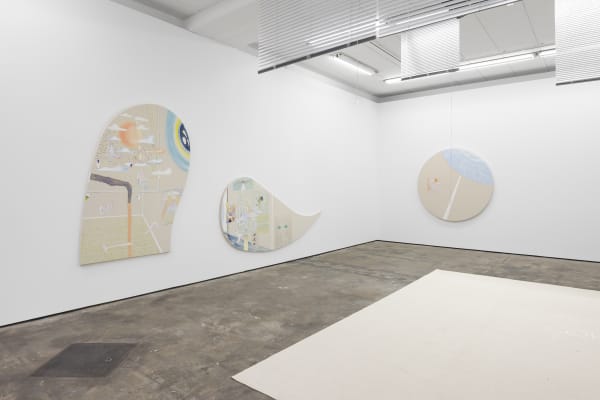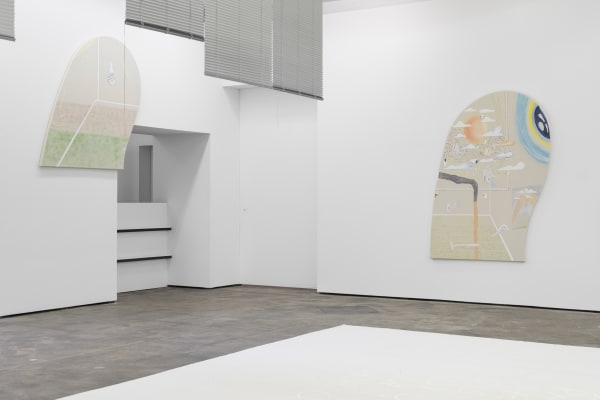Overview
Florian Meisenberg's paintings often function as membranes or portals. His canvases and videos are thresholds between analog worldliness on the one hand, and conduits that facilitate transmission and exchange of the here and now through virtual simulations on the other. In his third solo exhibition with WENTRUP, Meisenberg shows new works on canvas, in film, and a site specific installation of several projections generated by a specifically written software program.
Installation Views











